Imagine stepping into your backyard and being greeted by a serene oasis of dappled sunlight and cool, refreshing breezes. Whether you’re a novice just beginning to explore the possibilities of outdoor living or a seasoned homeowner looking to spice up your space, this guide is your ticket to creating a beautiful, shaded retreat. “11 Shade Ideas for Your Next Project” is packed with creative solutions that promise to transform your outdoors into a haven of comfort and style.
From elegant pergolas to lush tree canopies, the options in this guide offer something for everyone, regardless of experience level. You’ll discover practical benefits such as increased comfort, enhanced aesthetics, and even energy savings. Dive in with confidence, knowing that each idea is designed to inspire and empower you to craft an outdoor area that’s as inviting as it is functional.
Incorporate Retractable Shade Awnings
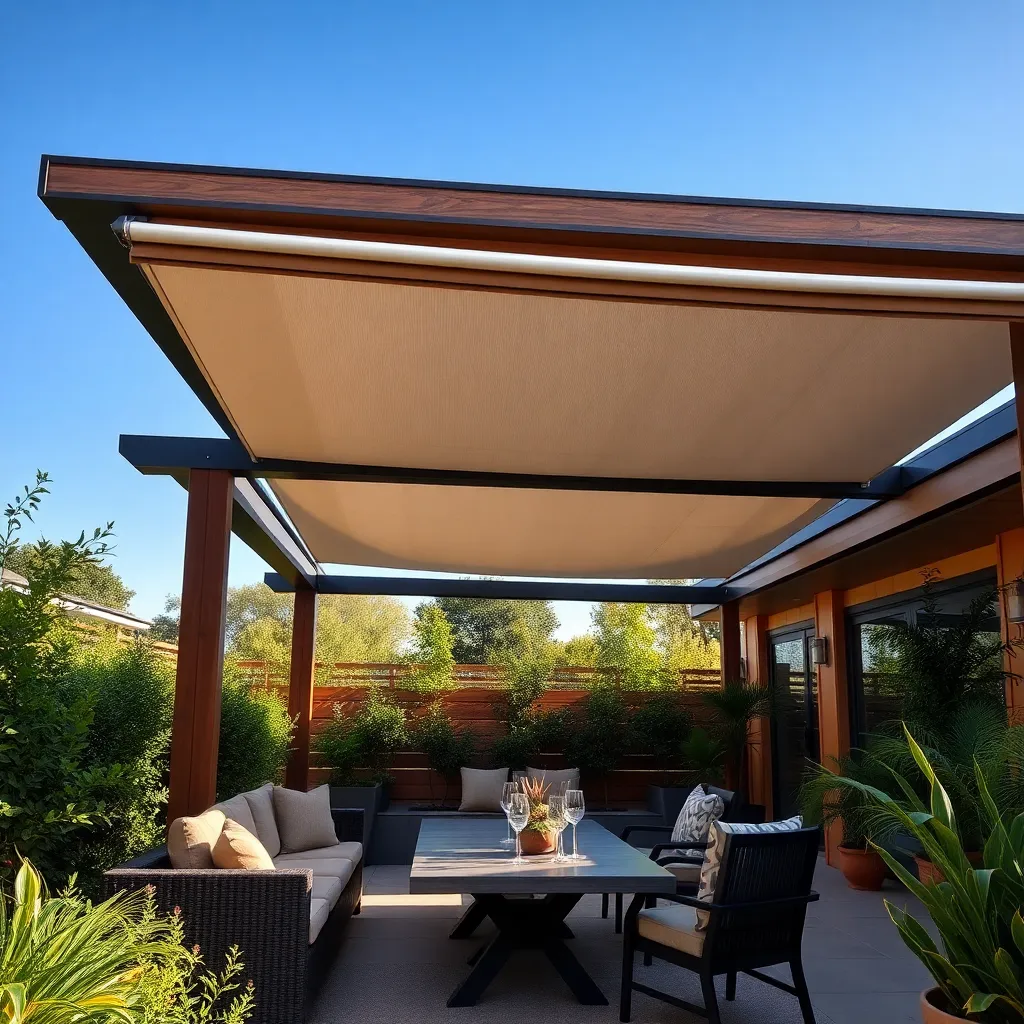
Incorporating retractable shade awnings into your outdoor space can be a game-changer, offering flexibility and style. These awnings allow you to adjust the amount of sunlight you let in, providing comfort and protection. Consider materials like durable acrylic fabrics, which resist fading and mildew, ensuring longevity. If you’re a beginner, start with a manual retractable awning, which is more cost-effective and easy to install. For a more advanced setup, motorized options with remote control can add convenience to your outdoor experience.
When planning your awning installation, ensure optimal placement by measuring your space carefully to determine the right size. Awnings should be wide enough to cover your desired area but not so large that they overpower your outdoor design. For a seamless integration, match the awning’s color and style to your existing home exterior. Advanced users can explore options like sensors that automatically retract the awning during high winds, providing additional protection and peace of mind. Whether you’re shading a patio, deck, or garden area, retractable awnings offer both functionality and aesthetic appeal that can be tailored to any design preference.
Utilize Pergolas with Climbing Plants
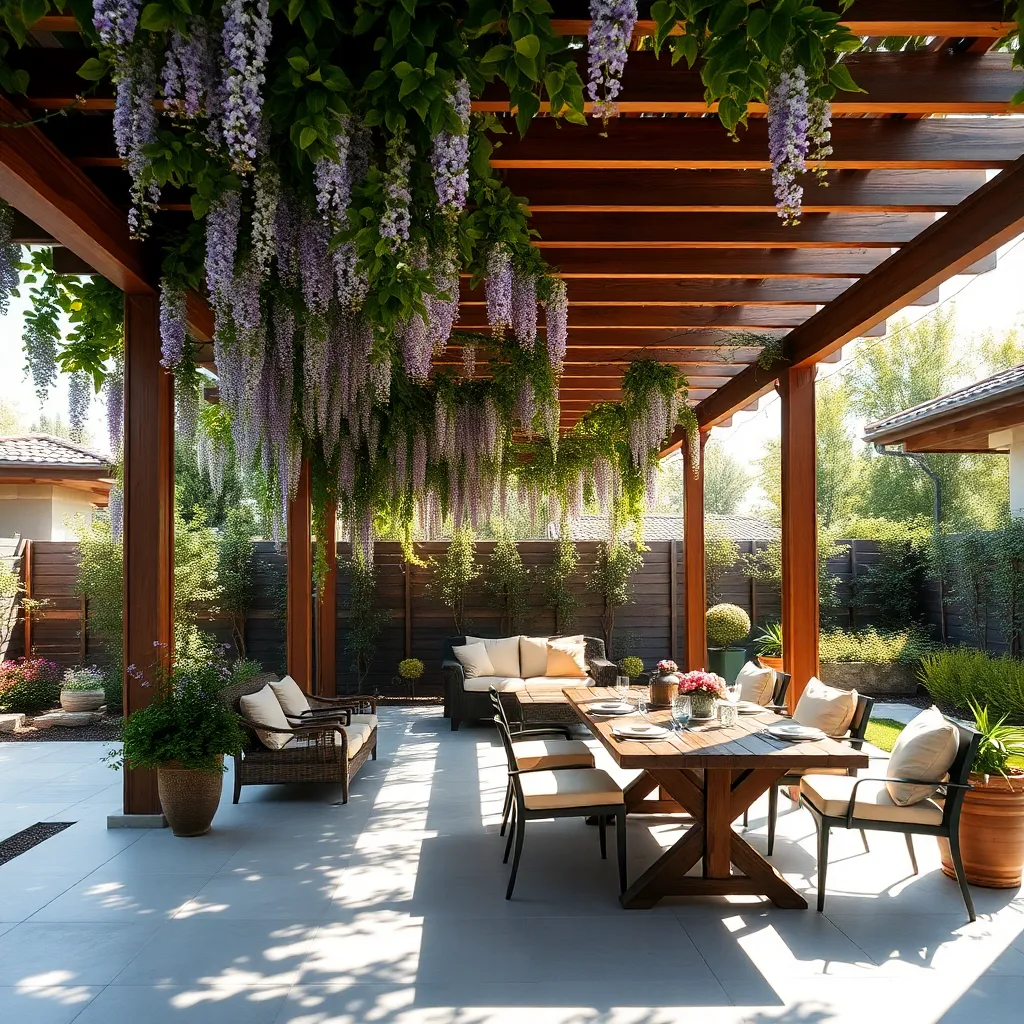
Transform your outdoor space by installing a pergola adorned with climbing plants to create a natural, inviting shade. Begin with a sturdy framework using materials like cedar or pressure-treated wood that withstand weather elements. For beginners, consider easy-to-grow climbers such as clematis or honeysuckle, which add vibrant colors and scents. Advanced gardeners might opt for wisteria or grapevines, which offer dense foliage and, in some cases, produce fruit. Position your pergola to maximize shade during peak sunlight hours, ensuring a comfortable retreat during hot days.
Incorporate key design features such as lattice panels or wires to guide plant growth and enhance the structure’s aesthetic appeal. Space the posts about 8 to 12 feet apart to ensure stability and ample room for plant expansion. To ensure thriving vines, provide adequate sunlight exposure and consider installing a drip irrigation system for consistent watering. Regular maintenance like pruning will help keep the plants healthy and the pergola looking its best. With these practical tips, your pergola can become a stunning focal point in your garden, offering both beauty and functionality.
Install Adjustable Umbrella Systems
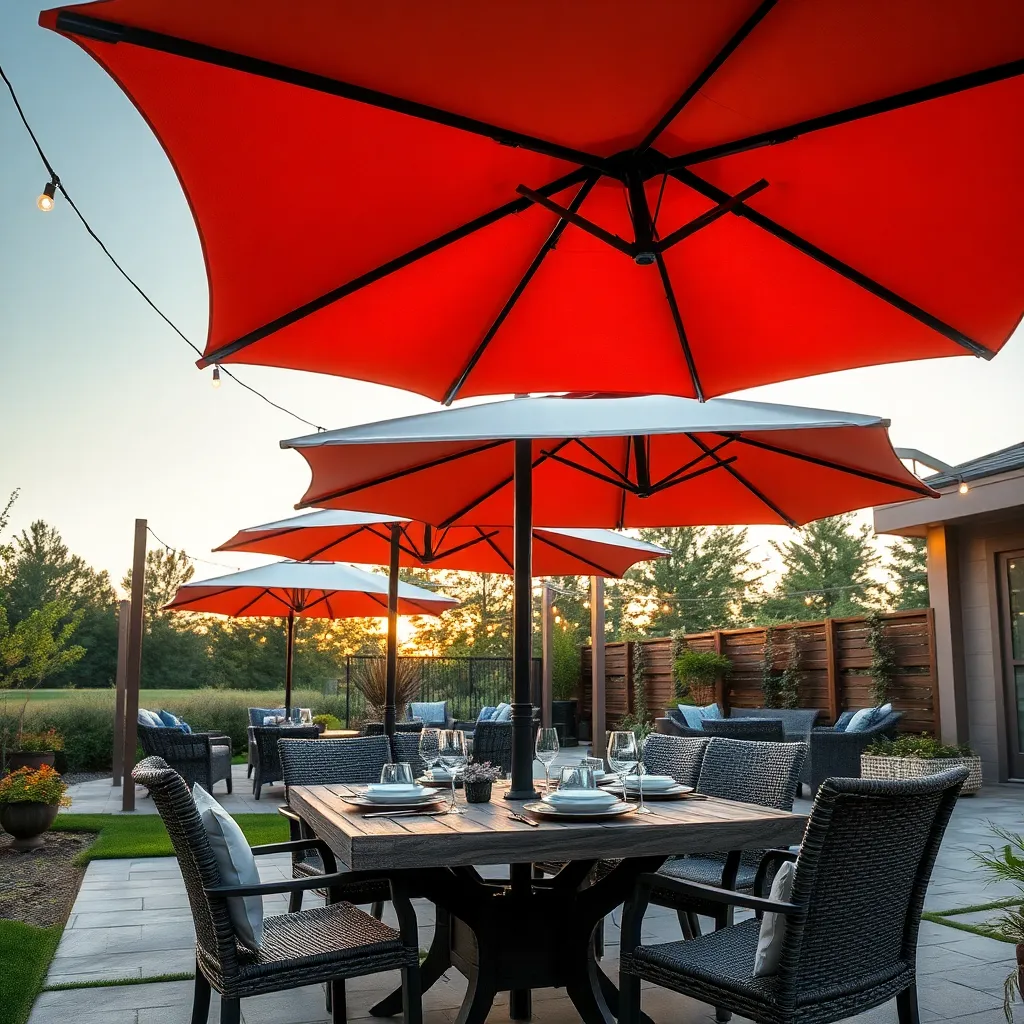
Consider installing adjustable umbrella systems to provide flexible and stylish shade for your outdoor space. These systems allow you to easily reposition the umbrella to follow the sun, ensuring maximum comfort throughout the day. Opt for umbrellas made from durable materials like aluminum or stainless steel for the frame, and choose UV-resistant fabrics for the canopy to ensure longevity and protection. Adjustable systems often come with a variety of base options, such as in-ground mounts or weighted stands, providing stability even in windy conditions.
For beginners, a simple crank or pulley system makes operation straightforward, while more advanced options might include motorized controls or LED lighting for added convenience and ambiance. Consider the size of your outdoor area when selecting an umbrella; a canopy with a diameter of at least 9 feet is generally recommended for adequate coverage. Advanced tip: To enhance versatility, look for cantilever designs that offer 360-degree rotation, allowing for seamless integration into your outdoor layout. With these systems, you can effortlessly adapt your shade solution to suit any occasion or time of day.
Design With Shade Sail Canopies
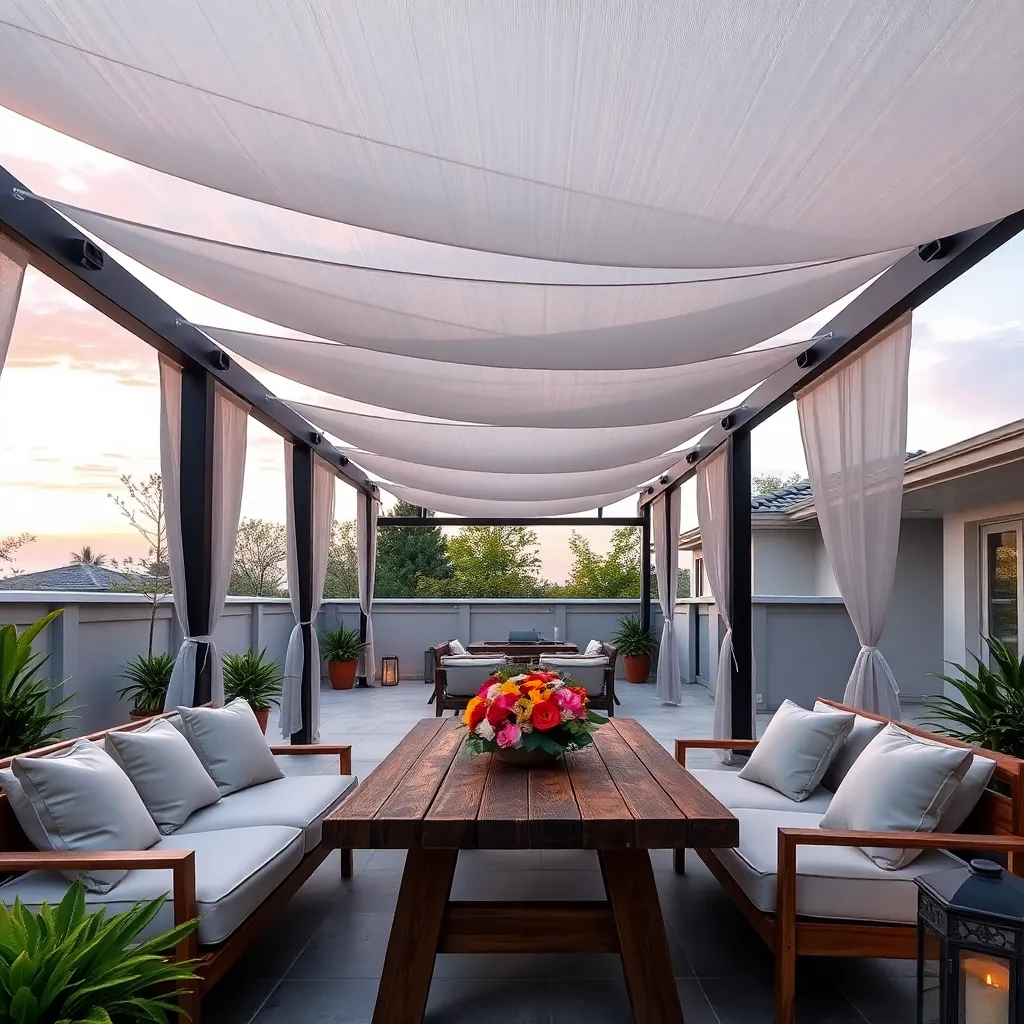
Shade sail canopies offer a versatile and stylish solution for outdoor shelter. Begin by selecting a high-quality, UV-resistant fabric, such as HDPE (high-density polyethylene), which balances sun protection and airflow. Consider installing the sails at varying heights to add an architectural element, and use durable stainless steel fixtures to ensure stability and longevity. For beginners, pre-made kits are available, simplifying the installation process with all necessary components included.
For those looking to customize, design your layout by experimenting with angles and overlaps, creating dynamic patterns that not only provide shade but enhance visual appeal. When measuring your area, ensure at least 10% extra fabric length for tension adjustments. Advanced users can explore combining multiple canopies in different shapes—such as triangles or rectangles—to cover larger spaces, keeping in mind to maintain a minimum of a 20-degree slope to facilitate water runoff. This approach not only maximizes functionality but also adds an impressive aesthetic touch to your outdoor space.
Create Shade with Tree Planting
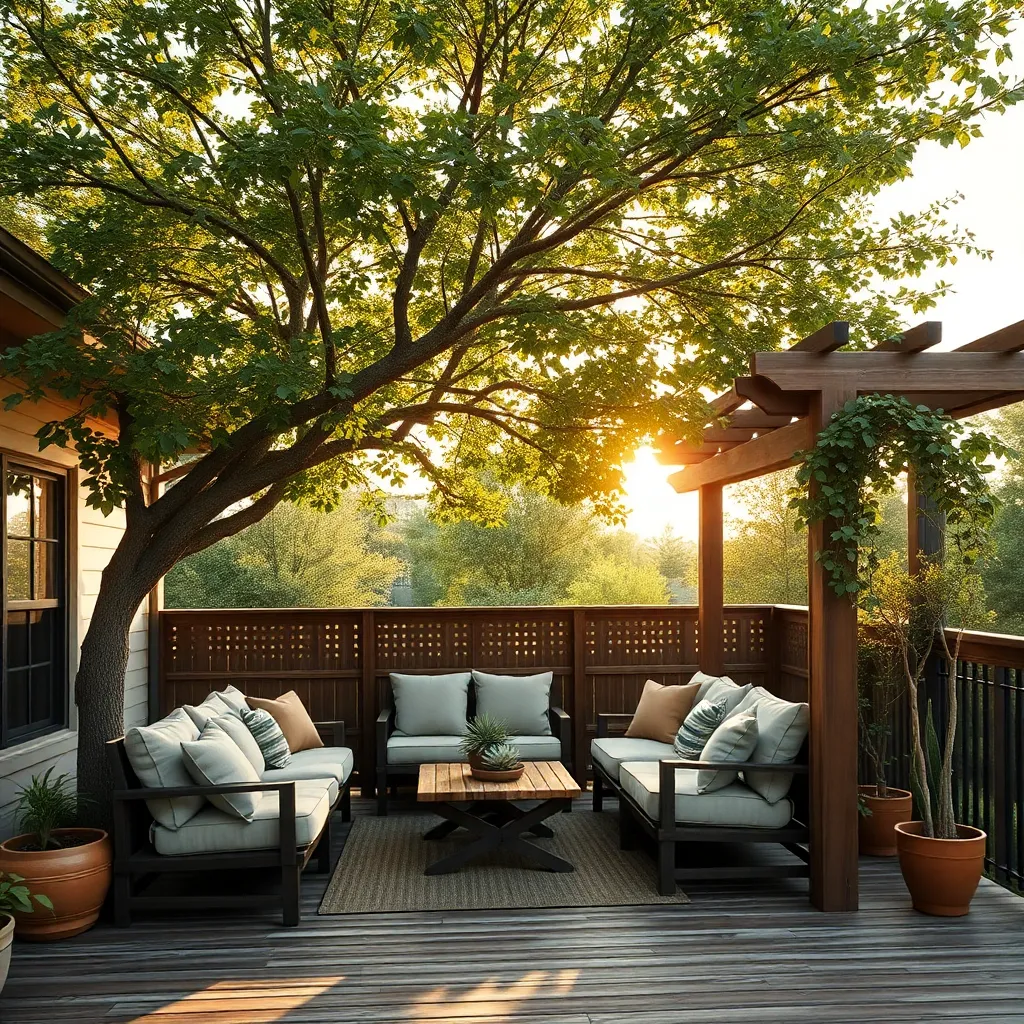
Planting trees is a natural and sustainable way to create shade in your outdoor space, offering both beauty and functionality. Start by choosing a tree species that suits your climate and space, such as a fast-growing maple or oak for temperate zones. When planting, consider spacing; trees should be placed at least 10-15 feet from your home to avoid root interference. Ensure you dig a hole twice as wide as the root ball to encourage healthy growth, and water regularly during the first few years to help your tree establish itself.
For those looking to create a more immediate impact, consider planting a combination of fast-growing and slower-growing species. This layering approach not only provides instant shade but also enhances the aesthetics of your garden. Use mulch around the base of the trees to retain moisture and suppress weeds, which is essential for young trees. For advanced gardeners, consider using a tree-guide wire system to shape and direct growth, ensuring optimal shade coverage in your desired areas.
Add Gazebos with Fabric Curtains
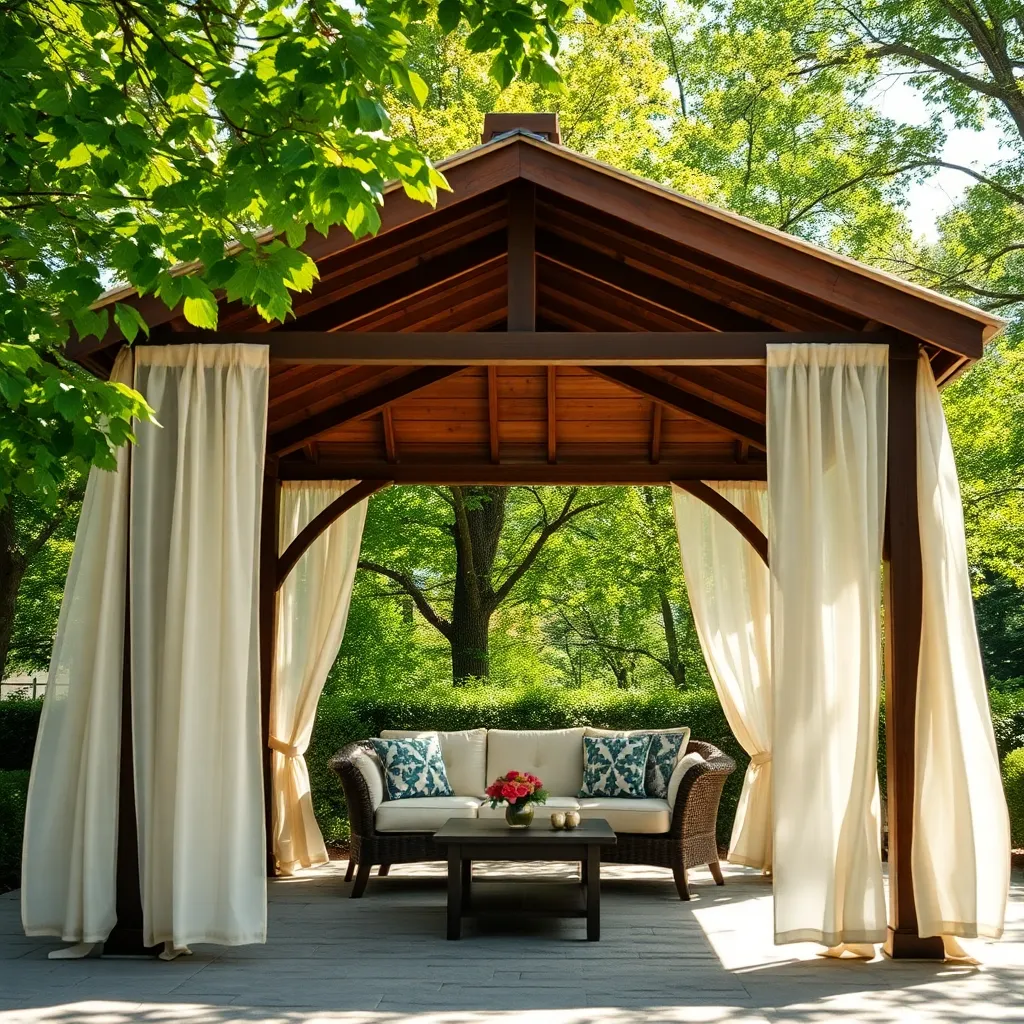
Enhancing your outdoor space with a gazebo can be both stylish and functional. Opt for a gazebo with fabric curtains to create a versatile and inviting area for relaxation or entertaining. Choose weather-resistant materials like polyester or Sunbrella fabric for the curtains to ensure durability and ease of maintenance. These curtains are not only great for adding privacy but also for controlling the amount of sunlight filtering into the space. For a beginner-friendly option, consider a pre-fabricated gazebo kit that includes easy-to-follow assembly instructions.
For a more personalized touch, consider customizing your gazebo with additional design features. Incorporate decorative elements like curtain tiebacks and valances for an elegant finish. Advanced gardeners might explore integrating climbing plants, such as wisteria or clematis, around the structure for a natural canopy effect. When selecting the size, ensure the gazebo is large enough to comfortably fit your outdoor furniture, typically a minimum of 10×10 feet for a small seating arrangement. By tailoring your gazebo to fit your style and functional needs, you can transform your outdoor area into a cozy retreat.
Use Outdoor Curtains for Versatility
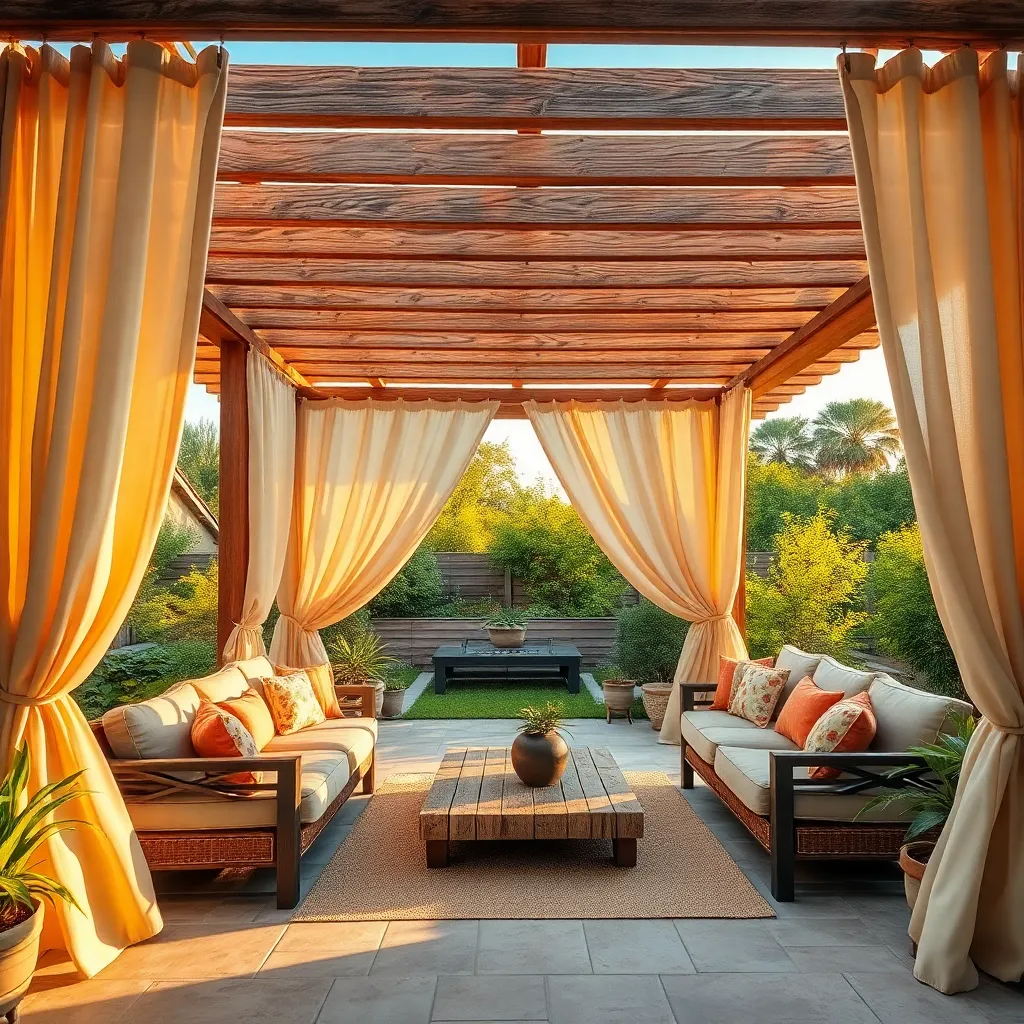
Outdoor curtains are a versatile addition to your outdoor space, allowing you to create a dynamic environment that adjusts with your needs. For beginners, start with weather-resistant fabrics like polyester or acrylic that are easy to maintain and withstand outdoor conditions. Consider installing curtain rods made from rust-resistant materials, such as aluminum or stainless steel, to ensure longevity. With curtains, you can easily open them during cooler days to enjoy the breeze or close them to block out harsh sunlight, providing a flexible shade solution.
For those looking to enhance their outdoor design, choose curtains with UV protection to help preserve the color and quality of your fabric over time. Advanced users may consider adding tiebacks or tie-downs for added security on windy days. Opt for neutral colors if you want a subtle look, or go bold with patterns to make a statement. When measuring for curtains, ensure they are about twice the width of the area you wish to cover for a full and luxurious drape effect. This simple update can instantly transform your patio, pergola, or gazebo into a cozy and stylish retreat.
Construct a Lattice for Vines
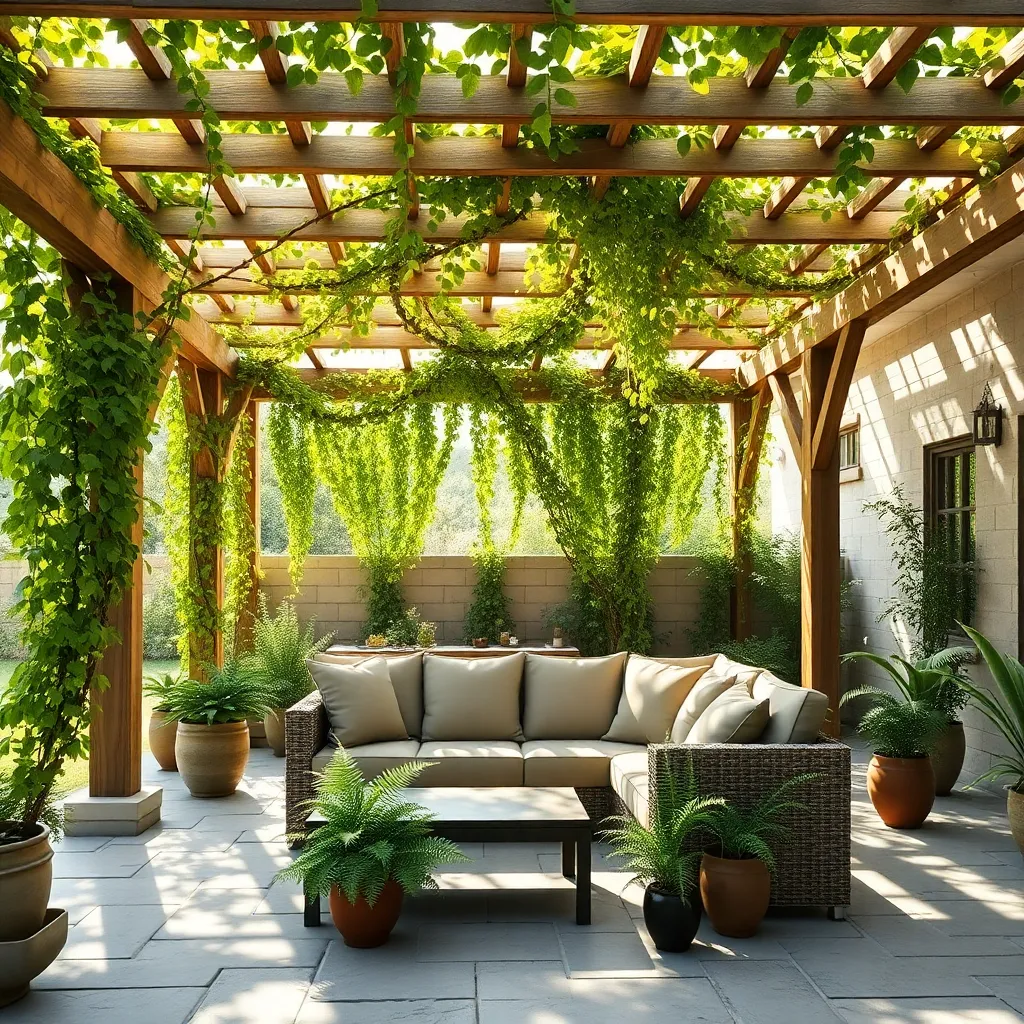
Lattices are a fantastic option for creating natural shade with the help of climbing vines. To start, select durable materials like cedar or pressure-treated wood, which can withstand the elements while providing a sturdy framework for your vines. For a basic lattice, use wooden strips of about 1×2 inches and arrange them in a crosshatch pattern, spacing them 2-4 inches apart to allow vines to weave through effortlessly. Ensure your structure is anchored securely—either attach it to an existing frame or set it up as a freestanding panel using stakes. This setup not only offers shade but also adds a beautiful vertical element to your garden.
For those looking to add a more advanced touch, consider integrating trellises with adjustable panels to control sunlight exposure as your vines grow. Use galvanized screws and brackets to enhance the lattice’s stability, especially if you’re in a windy area. Choose fast-growing vines like clematis or wisteria for quick results and perennial coverage. Remember to regularly guide the vines to ensure even growth and prevent overcrowding. This easy-to-maintain solution will transform your outdoor space into a lush, inviting retreat.
Implement Portable Shade Structures
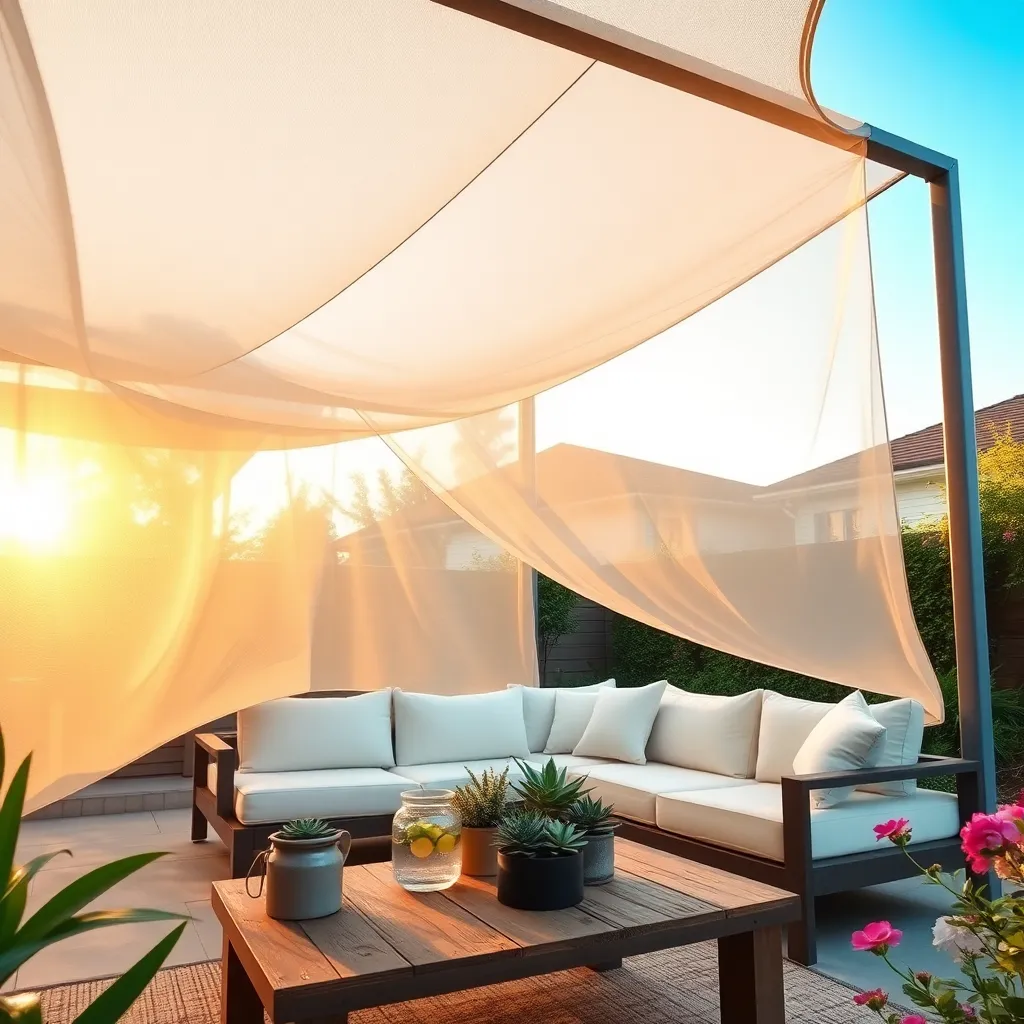
Portable shade structures are a versatile solution for creating comfortable outdoor spaces. Consider using pop-up canopies or shade sails, both of which offer flexibility and ease of installation. Pop-up canopies are typically made of polyester fabric with a collapsible metal frame, making them ideal for temporary setups. For a more tailored approach, shade sails can be installed using durable materials like HDPE fabric, which provides UV protection and is available in various colors to match your outdoor aesthetic.
When selecting a portable shade structure, it’s essential to consider the size and location of the area you want to cover. A 10×10-foot canopy is perfect for small gatherings, while larger areas might benefit from multiple shade sails strategically placed to maximize coverage. Ensure the structure is secured properly with stakes or weighted bases to withstand wind. For those looking to enhance their setup, consider using a combination of canopies and sails to create dynamic, layered shade effects that not only provide relief from the sun but also add visual interest to your outdoor space.
Integrate Shade Panels on Trellises
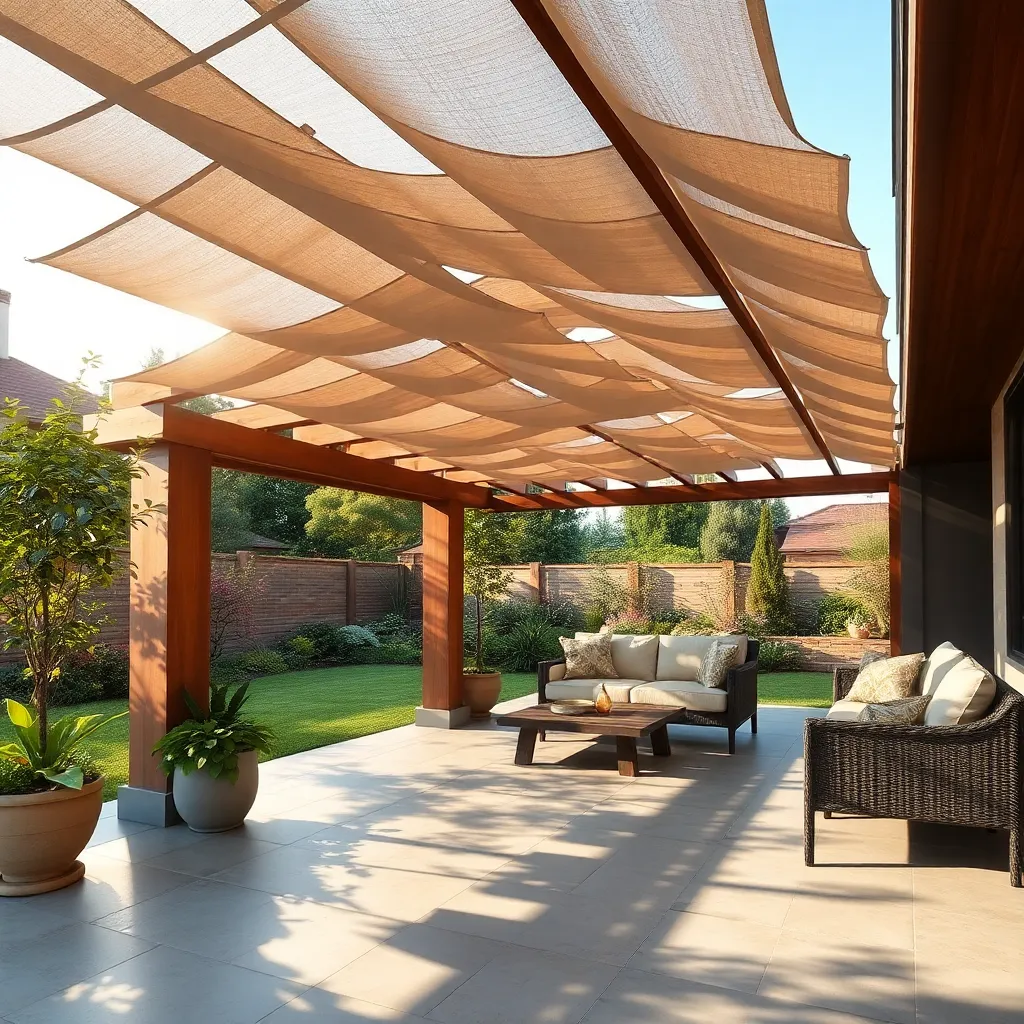
Integrating shade panels on trellises can transform your outdoor space into a cool, inviting haven. Choose durable materials like weather-resistant wood or metal frames to construct your trellis, ensuring longevity and stability. For the shade panels, consider options like UV-resistant fabric or bamboo slats that can be attached securely to the trellis. This setup not only offers shade but also a touch of elegance, making it a versatile addition to gardens or patios.
For beginners, start by measuring the area you want to cover, ensuring your trellis fits snugly and provides the desired amount of shade. Use simple mounting hardware for easy installation. If you’re more experienced, consider adding climbers like clematis or grapevines to the trellis for a natural shade solution. Ensure your design allows for airflow to keep the space beneath cool and comfortable. With a bit of creativity, trellis shade panels can be both a practical and aesthetic addition to your outdoor living area.
Opt for Pop-Up Tents for Flexibility
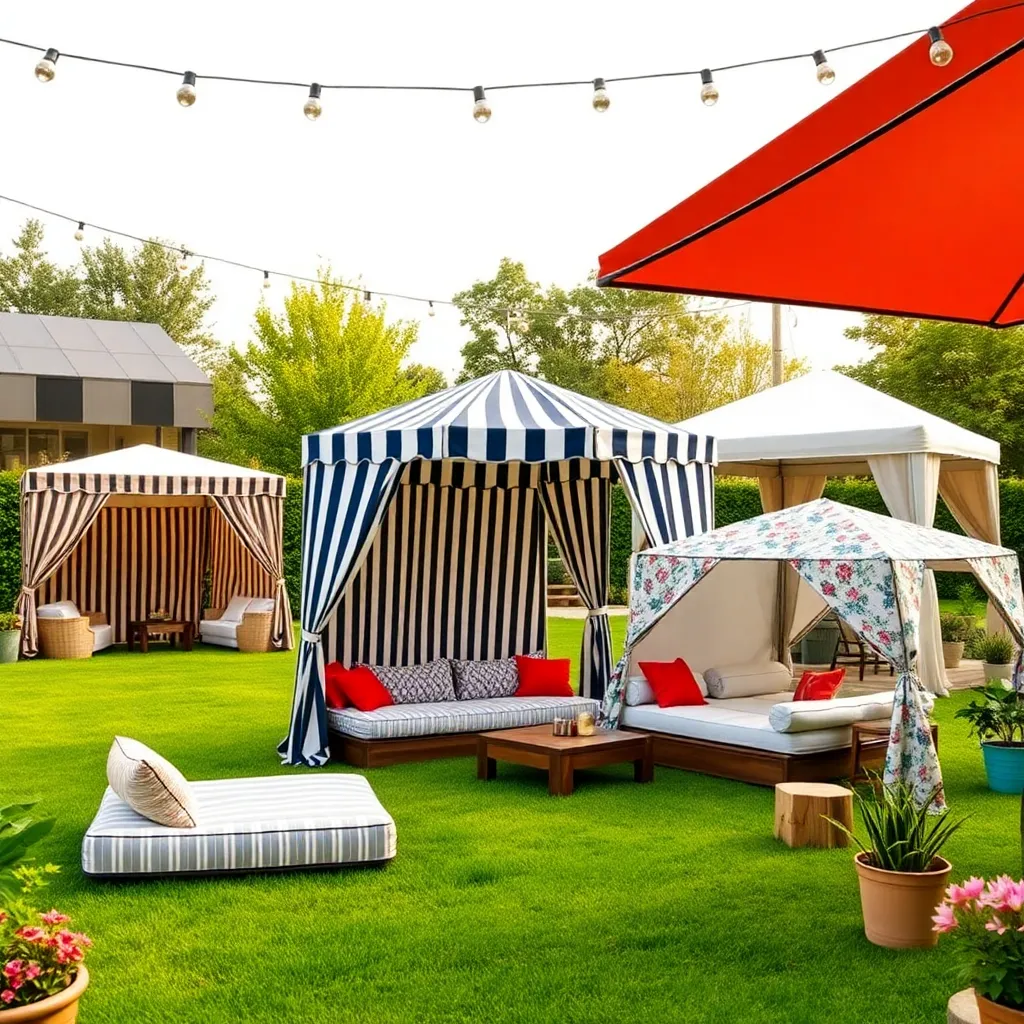
Pop-up tents are an excellent choice for those seeking flexible and adaptable shade solutions in their outdoor spaces. These lightweight and portable structures can be easily set up and taken down, making them ideal for both temporary events and long-term use. When selecting a pop-up tent, consider materials such as UV-resistant polyester for durability and protection from harmful sun rays. Beginners will appreciate that most pop-up tents come with straightforward assembly instructions, often requiring no tools.
For those looking to add a touch of style, choose tents with features like adjustable legs and vented tops that allow for better airflow. Advanced users might explore options with sidewalls to provide additional protection from wind and rain, enhancing comfort in various weather conditions. Opt for models with reinforced frames and secure anchoring systems to ensure stability even in breezy conditions. With a range of sizes available, from small 8×8 feet to larger 12×12 feet options, there’s a pop-up tent to fit any garden or patio space perfectly.
Conclusion: Creating Beautiful Outdoor Spaces
In exploring the 11 shade ideas to enhance your relationship project, we’ve navigated a diverse palette of concepts—from creating space for open communication and embracing each other’s differences, to fostering trust and intimacy, and prioritizing quality time together. We’ve also highlighted the importance of setting boundaries, practicing gratitude, and nurturing emotional support, alongside enhancing your physical environment with thoughtful gestures, shared goals, and personal growth.
Now, it’s time to take actionable steps. Begin by choosing one concept to focus on this week. Whether it’s planning a heartfelt date night or setting aside time for uninterrupted conversation, small, intentional acts can lead to meaningful transformation in your relationship.
Remember, relationships are a continuous journey of growth and discovery. By bookmarking this article, you’ll have a valuable resource at your fingertips, ready to guide you through the ups and downs of your unique journey.
As you implement these ideas, envision a future where your relationship thrives with deeper connection and understanding. Embrace the journey, knowing that each effort you make enriches the tapestry of your love. Save this guide, and together, let’s paint a beautiful future of relationship success!
